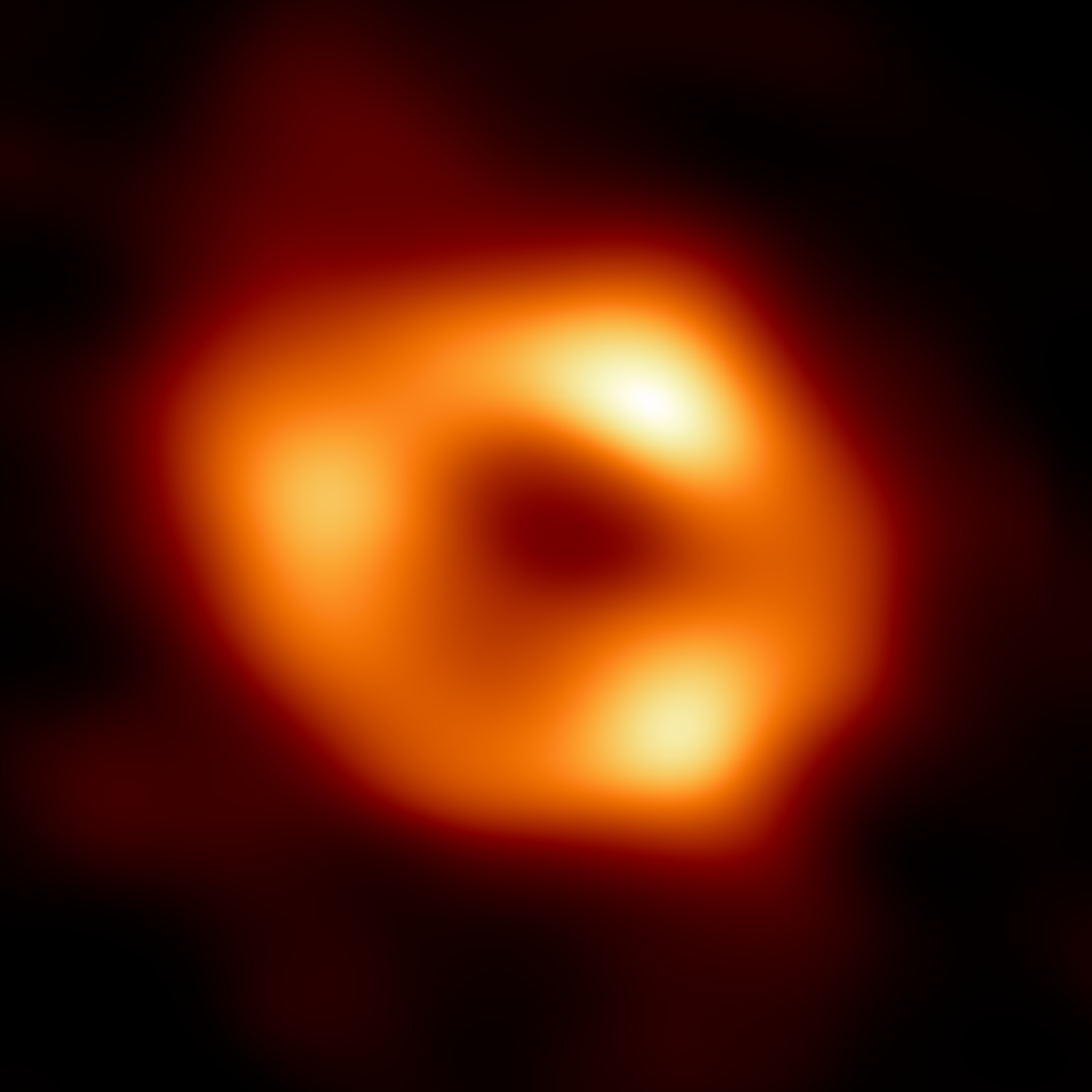Galaxy is a vast system of stars, gas, dust, and other matter held together in space by their mutual gravitational pull. The sun and hundreds of billions of other stars belong to our home galaxy, the Milky Way. Our galaxy takes its name from its appearance as a hazy, “milky” band stretching across the night sky. In fact, the word galaxy comes from the Greek word for milk.
In the 1920’s, the American astronomer Edwin P. Hubble discovered that the universe contains many other galaxies beyond our own. The observable universe includes billions, possibly even trillions, of galaxies. Each galaxy consists of from hundreds of thousands to trillions of stars. Most astronomers think that galaxies also contain vast amounts of unidentified material called dark matter that they have detected only by its gravitational pull on visible matter.

Galaxies span a wide range of physical properties. They range in size from a few thousand light-years in diameter to millions of light-years across. A light-year is the distance that light travels in a vacuum in one year—about 5.88 trillion miles (9.46 trillion kilometers). Each galaxy contains a total mass (amount of matter) ranging from roughly millions to trillions of times that of the sun.
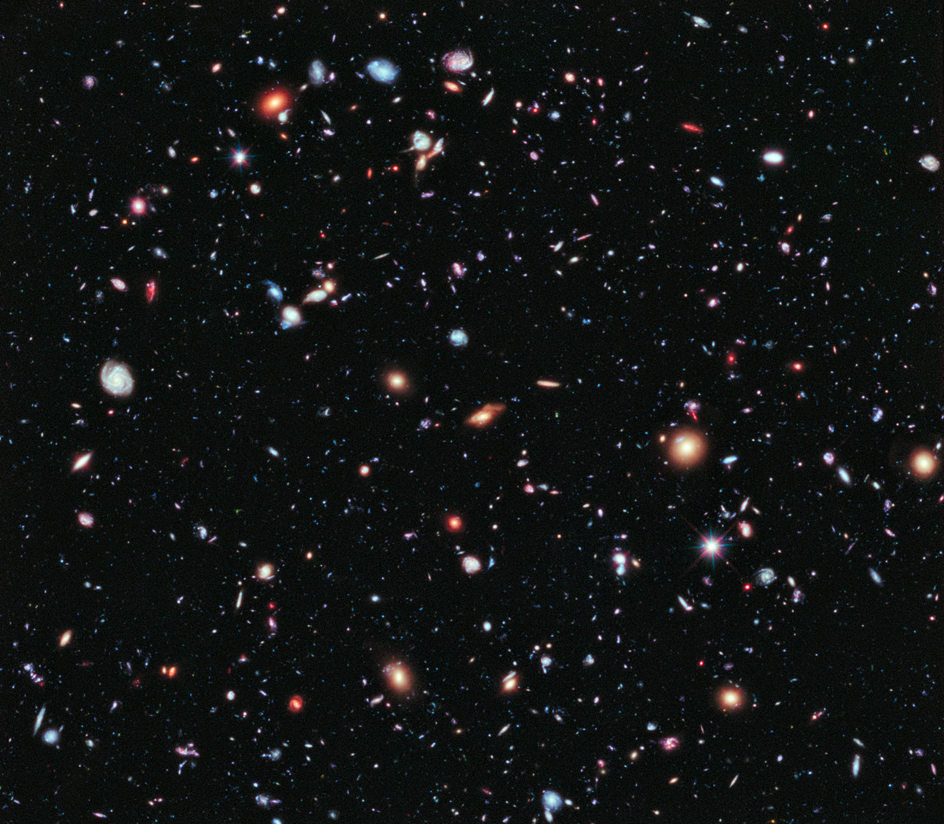
The light from numerous stars enables astronomers to see galaxies at great distances. The light from the farthest and oldest known galaxies took over 13 billion years to reach Earth. Astronomers therefore observe these galaxies as they appeared long ago, during the universe’s early history.
Types of galaxies
Astronomers often classify galaxies according to their appearance in visible light. Many use a simple system based on a scheme created by Hubble. It describes nearly all galaxies as one of three main types: (1) spiral galaxies, (2) elliptical galaxies, and (3) irregular galaxies.
Spiral galaxies
feature a thin, disklike structure with sweeping arms of stars wrapped about the galaxy’s center. Many people rank spiral galaxies among the most beautiful celestial objects. The sun lies between two arms in the thin disk of the Milky Way, which is classified as a spiral galaxy. Most of the stars and interstellar matter (matter between the stars) in spiral galaxies lie within their disks. The disks measure from 10,000 to nearly 100,000 light-years in diameter.
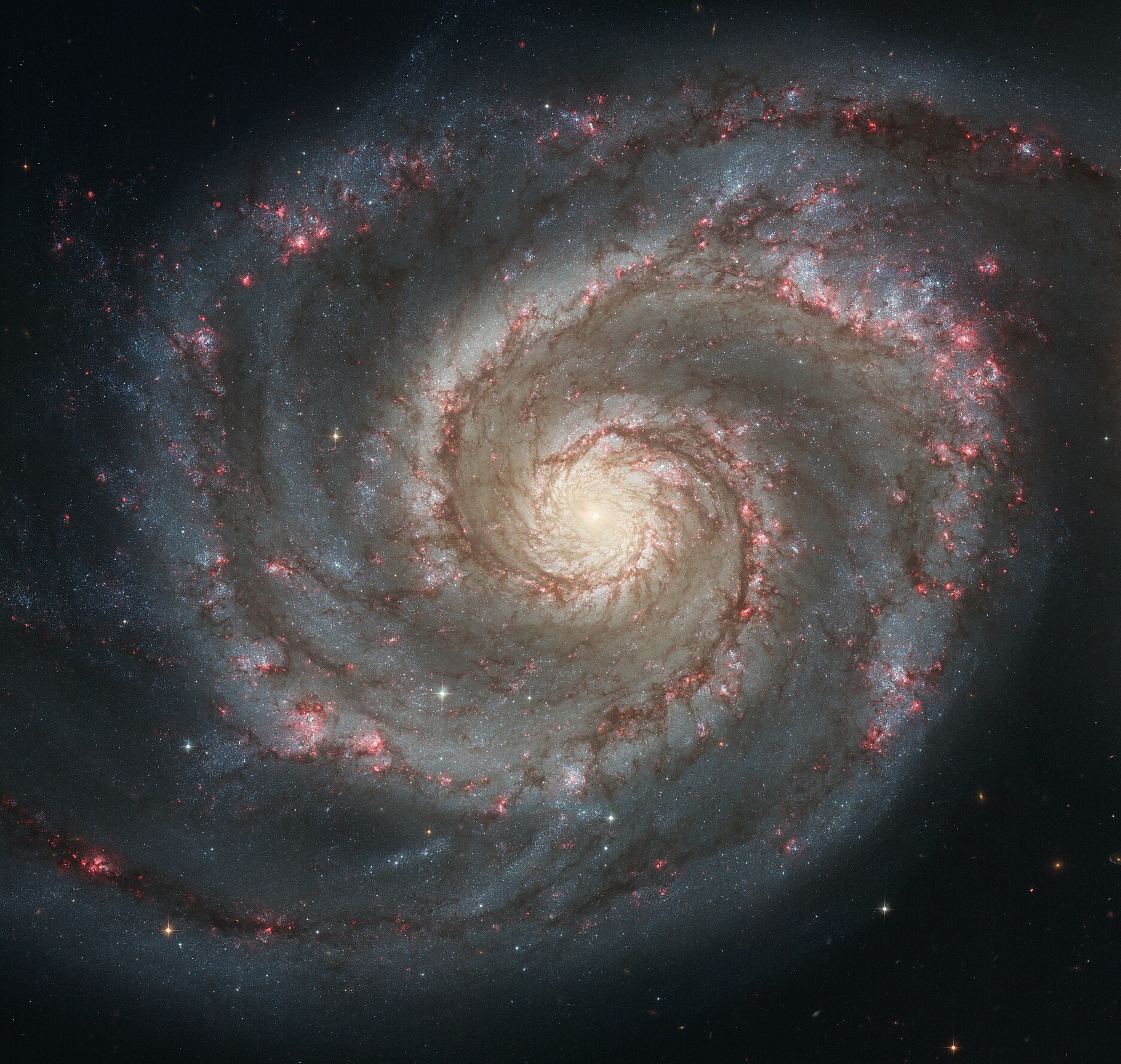
The centers of most spiral galaxies feature a dense concentration of stars, known as a bulge, that extends above and below the disk. Bulges typically measure a few thousand light-years in diameter. Many spiral galaxies, including the Milky Way, have elongated bulges shaped like bars. Hubble’s classification scheme refers to such galaxies as barred spiral galaxies. In these galaxies, the spiral arms typically trail off the ends of the bar.
The arms of spiral galaxies appear prominent in visible light because the arms contain a high proportion of hot, massive stars. Such stars give off far more light than less massive and more common stars like the sun. However, they shine for only millions of years, compared to the sun’s lifetime of 10 billion years. Clouds of gas and dust called nebulae also glow within the spiral arms. New stars form from this material. Matter fills the disk of a spiral galaxy more evenly than the appearance of the arms would suggest. The regions between the arms simply contain mostly older, dimmer stars and colder gas and dust that gives off little visible light.
Spiral arms most likely form as a result of waves in the density of a galaxy’s disk. As the disk rotates, the gravitational pull from the matter in the disk and any central bulge causes stars to pile up along spiral waves within the disk. These density waves allow clouds of gas and dust to compress along a spiral pattern. Stars typically form in the regions of compressed gas, and the hot, massive stars brighten the spiral arms. As the short-lived, massive stars die off, only the dimmer, lower-mass stars remain. That portion of the disk fades as the wave passes to a new part of the disk, repeating the process.
The stars in the disk of a spiral galaxy revolve in the same direction around the galaxy’s center. Each star follows a roughly circular orbit within the plane of the disk. However, the disk does not rotate like a solid structure, such as a pinwheel. Instead, each star revolves about the center at its own rate. The sun, for example, takes about 240 million years to travel once around the center of the Milky Way. Stars farther from a galaxy’s center take longer to travel around the disk than do closer stars. The same pattern occurs in our solar system—outer planets take longer to orbit the sun than do inner planets.
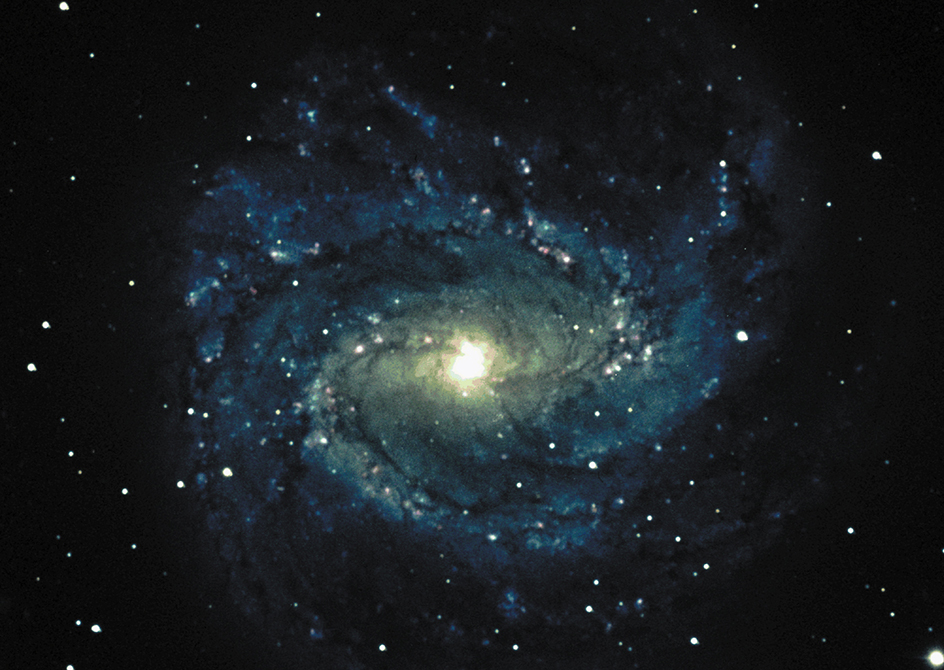
However, the motions of stars in a spiral galaxy differ from those of planets in our solar system in an unexpected way. In our solar system, planets farther from the sun travel at slower speeds that do closer planets. In contrast, the stars in the outer portion of a galaxy’s disk move at roughly the same speed as the stars nearer to the center. Astronomers cannot explain the high speeds of distant stars and gas in terms of the gravitational pull of the visible matter alone. Instead, most believe that spiral galaxies must contain vast amounts of dark matter.
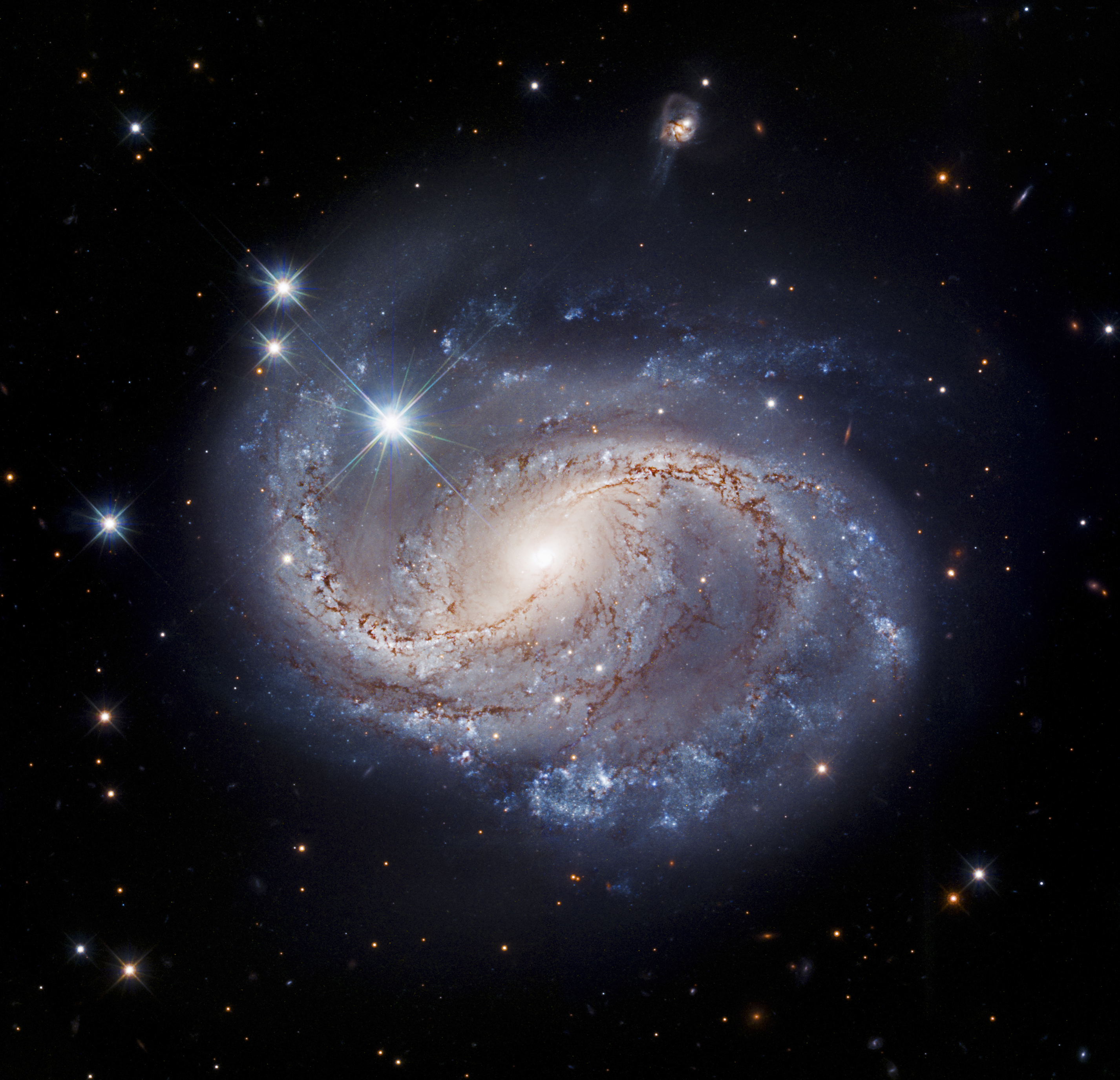
To account for the observed rotation of spiral galaxies, the dark matter must be distributed in a vast, centrally concentrated sphere called a halo that extends far beyond the visible limits of the galaxies. In addition, the dark matter halo of a typical galaxy must contain nearly all of its mass. For example, astronomers think that the Milky Way contains a halo of dark matter that extends nearly 1 million light-years from the galaxy’s center and contains about 90 percent of the galaxy’s mass. Most astronomers think that all galaxies contain halos of dark matter. Calculations indicate that the disks of spiral galaxies would be unstable without such halos. Furthermore, the bars seen in many spiral galaxies would be much more pronounced. See Dark matter.
Elliptical galaxies
have forms like centrally concentrated spheres or flattened globes. The light of an elliptical galaxy fades gradually outward from its bright core. Elliptical galaxies typically contain old stars billions of years in age. They appear as swarms of stars and generally have little gas and dust or the young stars which would form from such interstellar matter.
Astronomers classify an elliptical galaxy based on its apparent shape. Because they can see them from only one perspective, astronomers cannot determine the exact shape of any one elliptical galaxy. However, surveys of many ellipticals have shown that they span a range of shapes, from nearly round to flattened spheres. Elliptical galaxies also vary widely in size and brightness. They include some of the largest, smallest, brightest, and dimmest known galaxies in the local universe. The term local universe describes the region of the universe that lies within about 1 billion light-years of the Milky Way.
The individual stars in elliptical galaxies follow a wide range of orbits that determine the shape of a given elliptical galaxy. The stars in round elliptical galaxies have randomly tilted orbits, while stars in flattened elliptical galaxies tend to have orbits closer to a common plane. The paths of these orbits make it difficult for scientists to analyze the speeds of the stars in elliptical galaxies. However, the motions of stars, gas, and other objects far from the centers of elliptical galaxies imply that these galaxies also contain vast halos of dark matter.
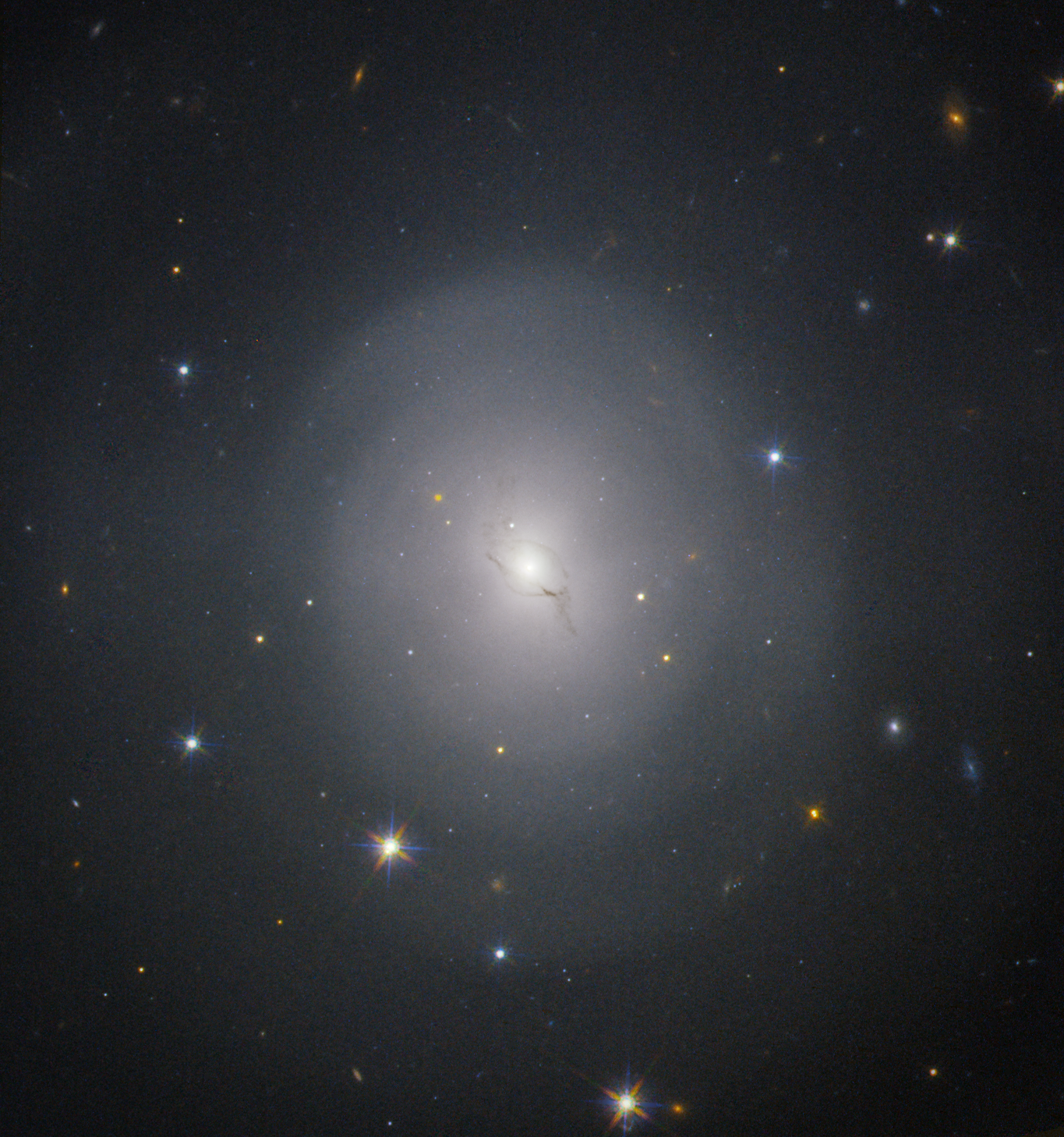
Some spiral and elliptical galaxies share certain features. For example, some spiral disks have central bulges or bars that resemble medium-sized elliptical galaxies. In contrast, the centers of some elliptical galaxies contain faint disks of gas, dust, and young stars.
Irregular galaxies
do not qualify as spiral or elliptical systems. In most irregular galaxies, star formation occurs in randomly distributed regions. As a result, these galaxies usually have a patchy, disorderly appearance. Compared to spiral or elliptical galaxies, irregular galaxies typically contain more of their visible matter in the form of gas and dust than in stars. Most irregular galaxies contain enough gas to produce stars for several billions of years into the future.
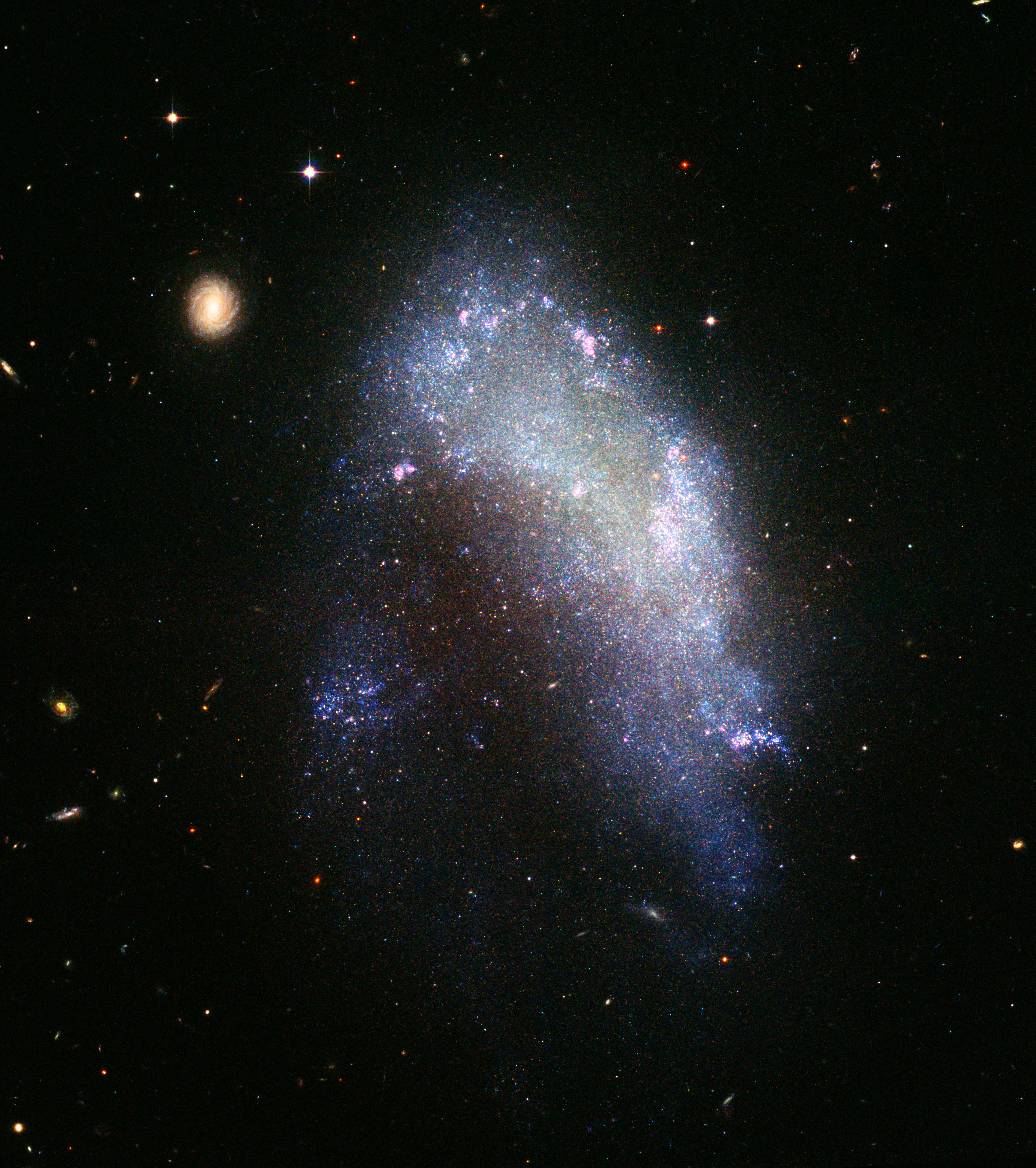
Irregular galaxies appear to have been forming stars for many billions of years. The older stars typically describe thin disks like those found in spirals. However, the disks in irregular galaxies usually lack spiral arms and central bulges. Most irregular galaxies rank as dwarf systems of much lower mass than typical large galaxies like the Milky Way. As a result, irregulars cannot sustain the density waves that generate spiral arms.
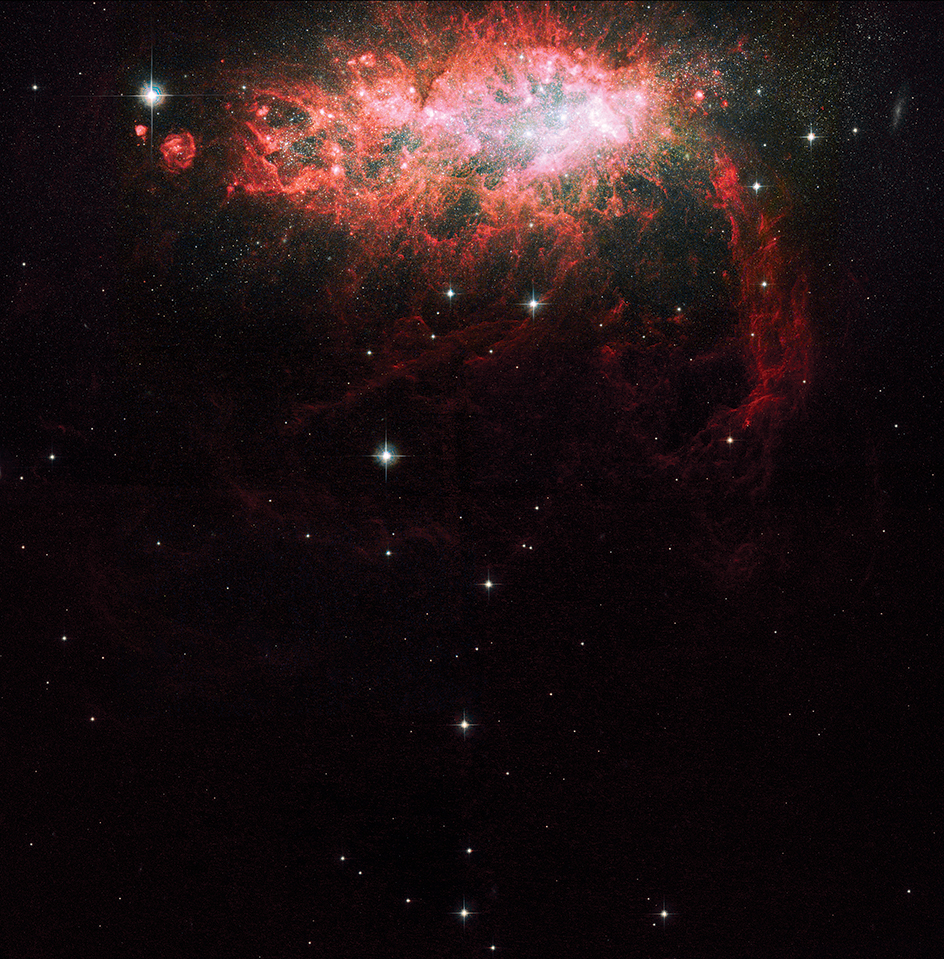
The stars and gas in irregular galaxies exhibit some of the random motions found in elliptical galaxies and some of the ordered rotation seen in spirals. By analyzing these motions, astronomers have concluded that irregular galaxies also contain large halos of dark matter.
Other types of galaxies.
The classification scheme developed by Hubble does not include all possible galaxy types. Many galaxies have forms that cannot be described as spiral, elliptical, or irregular.
Peculiar galaxies feature unusual shapes. These systems may result from dramatic events, such as the close interaction or collision of two or more galaxies.
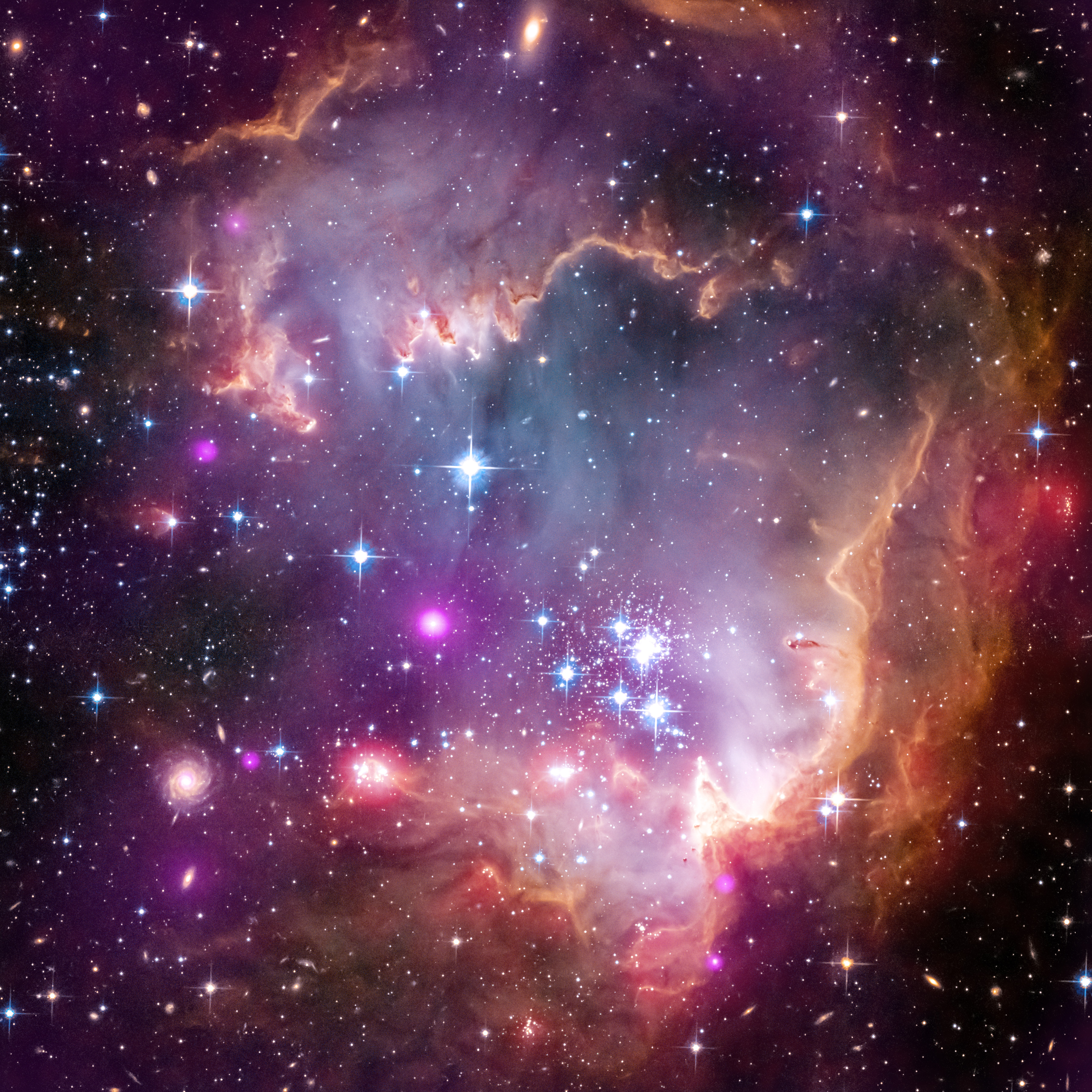
Starburst galaxies, which occur in a variety of shapes, produce new stars at unusually high rates. Some starburst galaxies form stars at rates measuring hundreds or thousands of times that of the Milky Way. Our galaxy produces about one solar mass of new stars each year. A galaxy cannot remain a starburst galaxy for long because the rapid star formation quickly uses up all the available gas and dust. Some starburst galaxies form as a result of interactions with neighboring galaxies and often qualify as peculiar galaxies. Others represent a normal phase in the evolution of spiral or elliptical galaxies.
Active galaxies give off vast amounts of radiation from their nuclei (cores). During periods of activity, the nucleus—which can measure less than one light-year in diameter—radiates more energy than does the rest of the stars, gas, and dust in the galaxy. These periods may last for millions of years. Astronomers have observed active galactic nuclei in spiral, elliptical, and peculiar galaxies.
Interactions between galaxies
Few galaxies are truly isolated. Most galaxies, including our own, inhabit groups, containing dozens of galaxies, or clusters, containing from hundreds to thousands of members. Groups and clusters, in turn, reside in large superclusters. Galaxies can collide and merge to form new galaxies of different sizes and types.
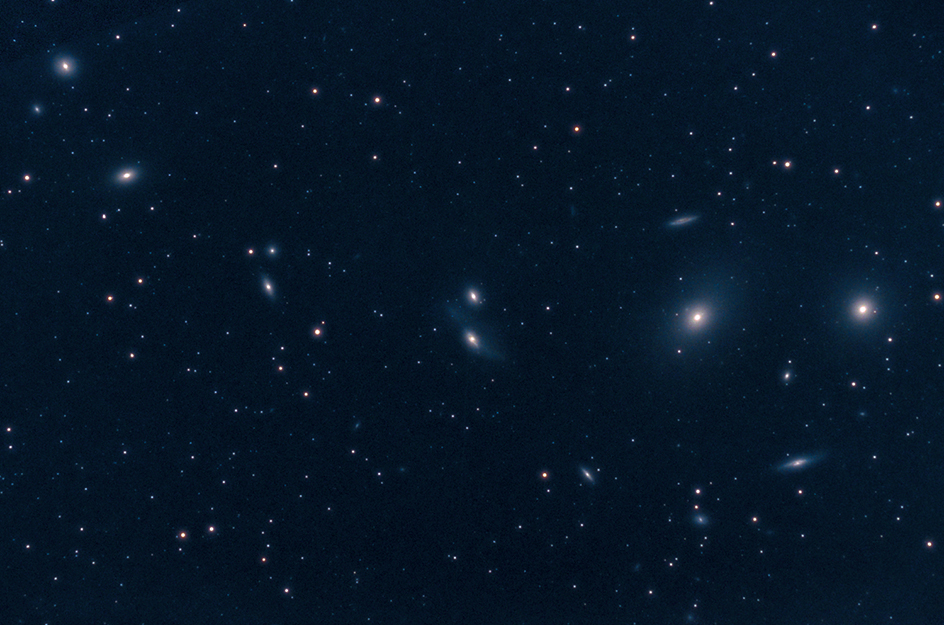
Galaxy groups, clusters, and beyond.
The Milky Way and the Andromeda Galaxy rank as the two largest members of our own group, the Local Group. The Local Group consists of about 50 galaxies concentrated in a region around 10 million light-years in diameter.
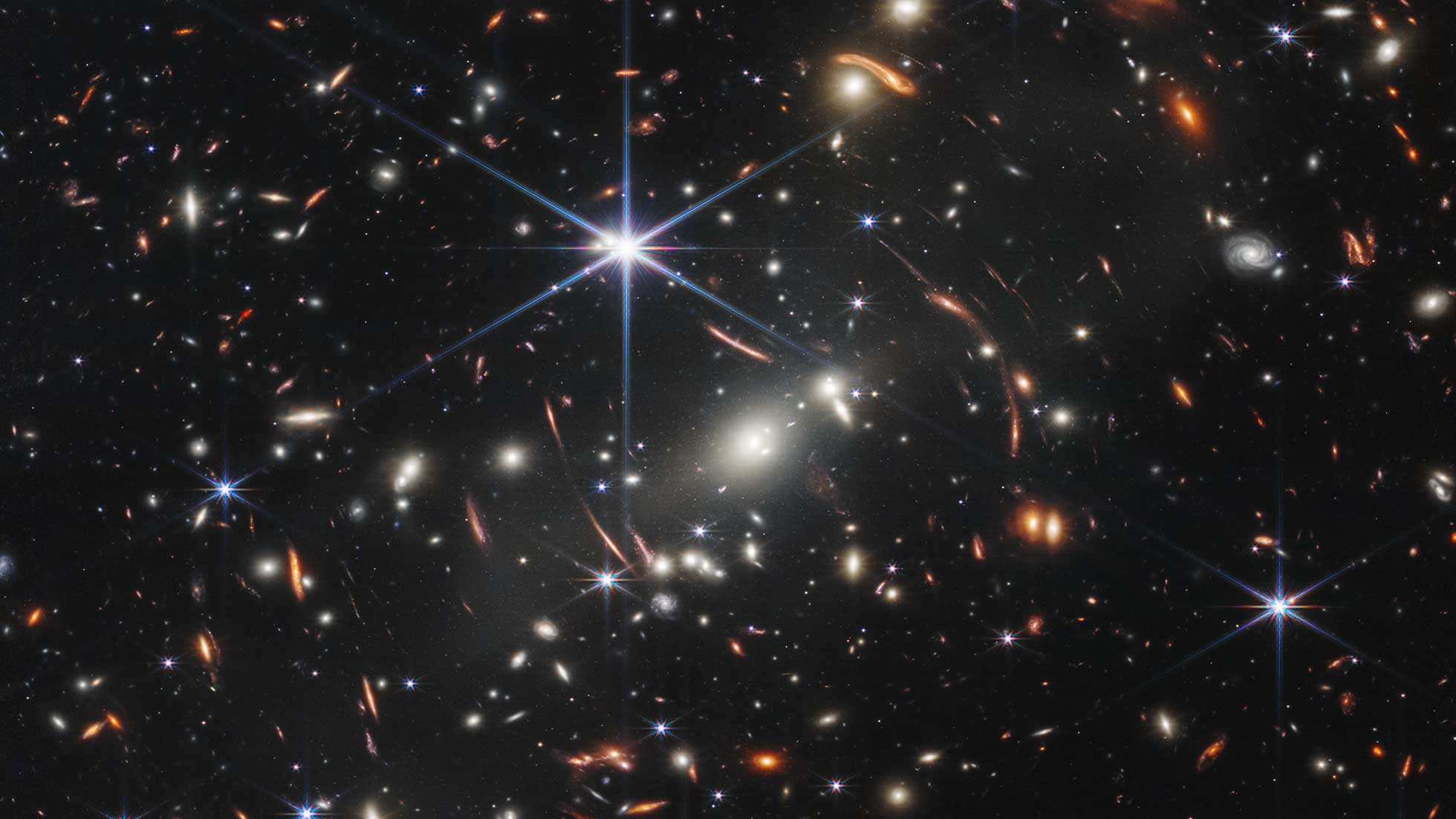

Nearly all the other large galaxies within about 40 million to 50 million light-years of the sun belong to groups that contain from 20 to 100 galaxies. The nearest groups visible with a telescope in the Northern Hemisphere include the M81 Group and the Maffei Group. The Sculptor Group and Centaurus Group appear in the Southern Hemisphere. Like the Local Group, these groups have two or three dominant galaxies, typically spiral ones.
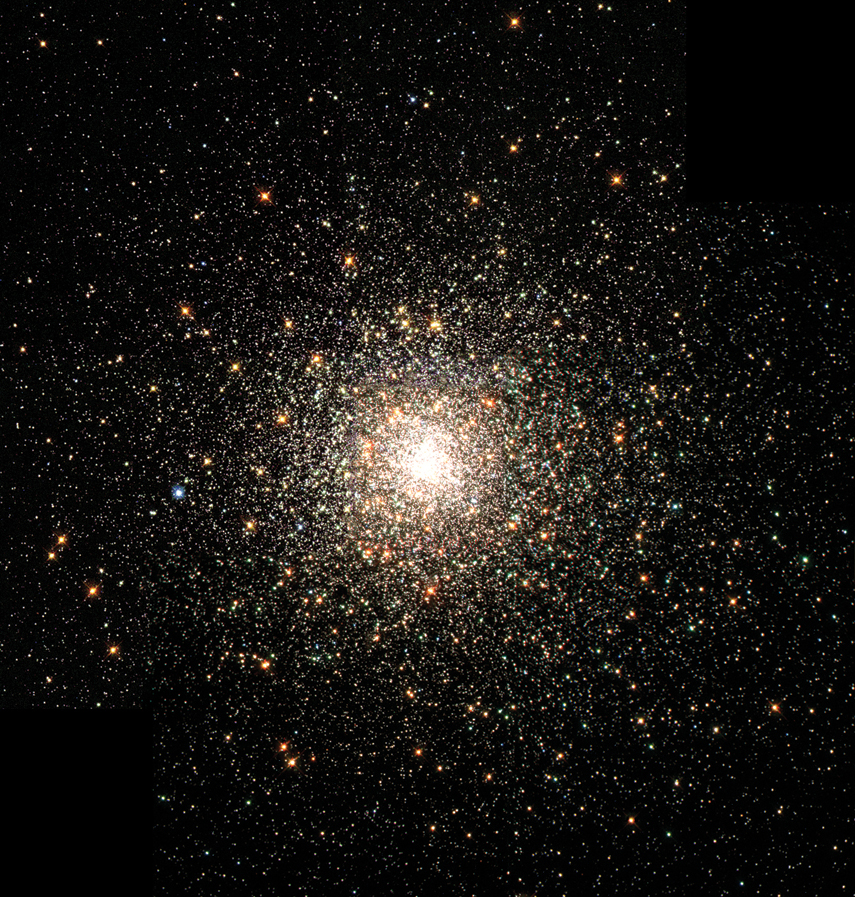
The Virgo Cluster ranks as the nearest cluster of galaxies. It lies about 55 million light-years away and consists of about 2,500 galaxies. The Virgo Cluster contains several dominant elliptical galaxies at its core.
The Local Group, the Virgo Cluster, and dozens of other nearby groups and clusters together form the Local Supercluster. This structure measures about 200 million light-years in diameter and contains tens of thousands of galaxies.
Surveys of the distribution of galaxies have revealed that superclusters form parts of vast fiberlike structures where galaxies are typically found. Huge voids, nearly empty regions measuring hundreds of millions of light-years across, span the volume between these fibers. In 2007, astronomers reported finding an enormous void stretching nearly 1 billion light-years across.
Galaxy mergers.
Like the stars in elliptical galaxies, the individual galaxies in groups and clusters follow independent, randomly tilted orbits. Stars are too small and too widely separated to undergo frequent collisions. However, galaxies are large enough that collisions or mergers between galaxies commonly occur in crowded regions. As two galaxies approach, they interact by exerting strong tidal forces on each other. Tidal forces are physical strains caused by the uneven pull of gravity on different parts of an object. The tidal forces stretch the interacting galaxies into unusual shapes.
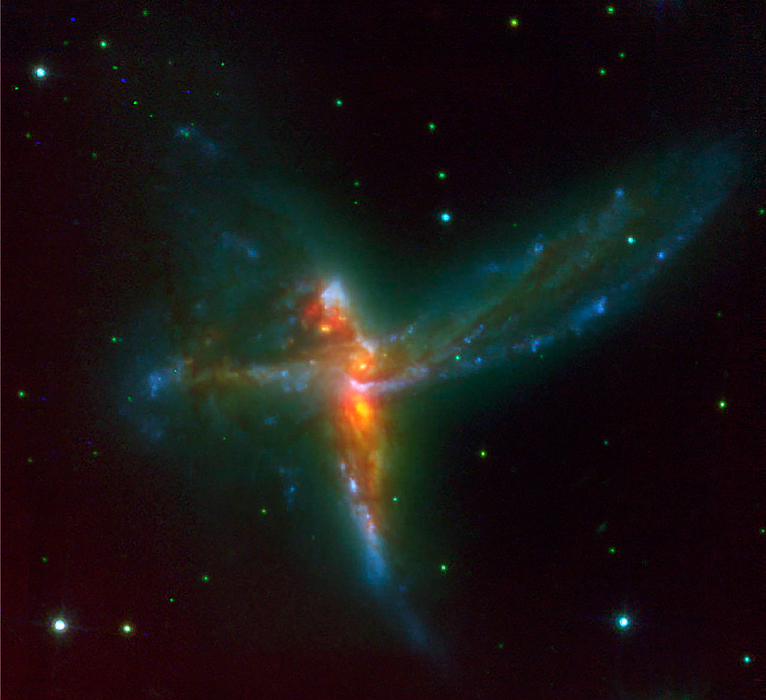
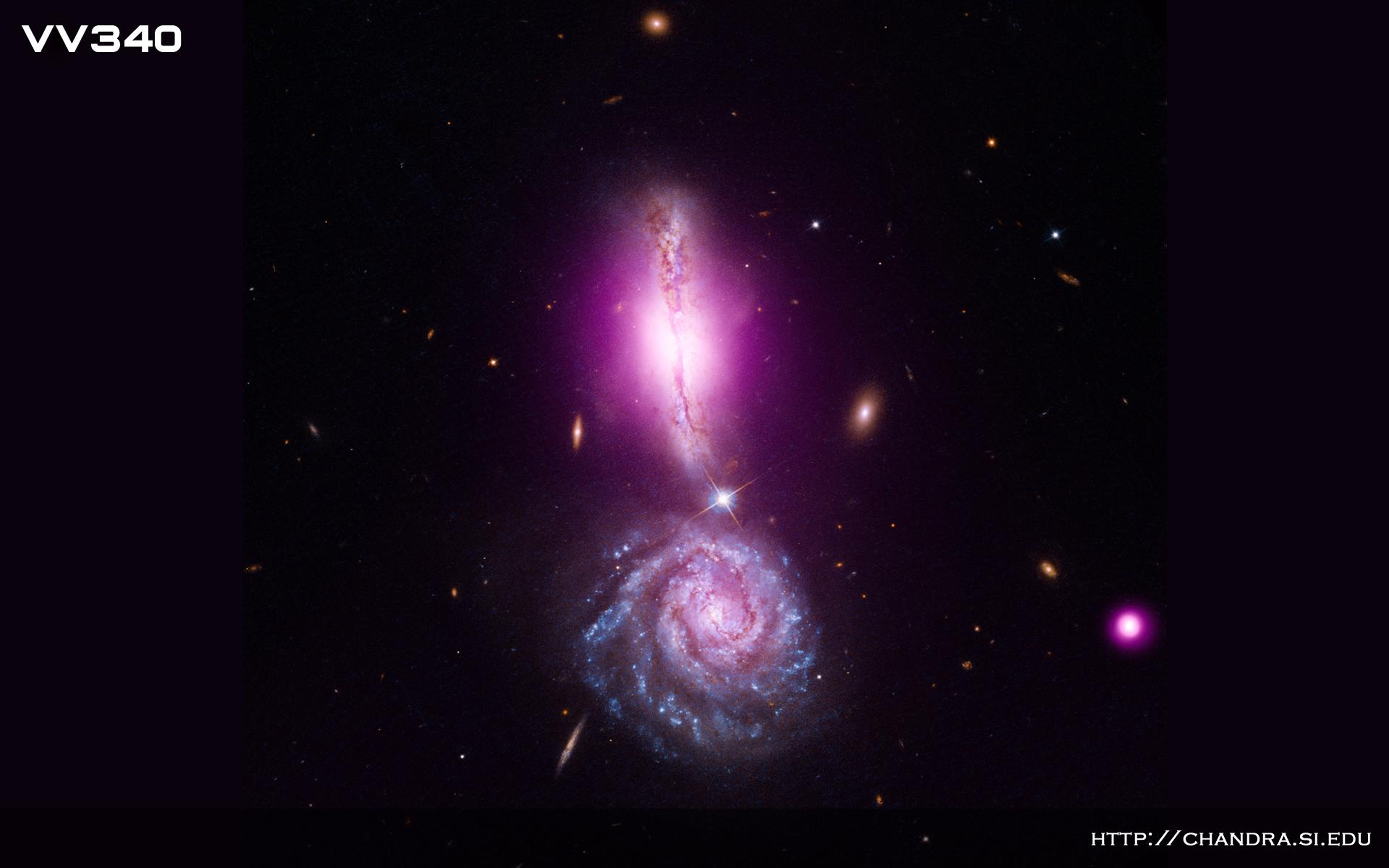
Many interacting galaxies eventually merge into a single, larger galaxy. Computer models indicate that the collision of two large spiral galaxies can produce a giant elliptical galaxy. The collision of a small irregular galaxy and a large spiral galaxy can destroy the irregular galaxy and alter the spiral galaxy.
Surveys of galaxies in the local universe suggest that collisions play a key role in the development of galaxy groups and clusters. Elliptical galaxies typically appear in the centers of clusters and in other crowded regions. This pattern may result from crowded spiral galaxies merging into larger elliptical galaxies.
Galaxy evolution
Astronomers can study galaxies at various distances representing more than 90 percent of the universe’s history. These observations reveal that galaxies in the early universe differed from present-day galaxies in important ways. The early universe contained a greater number of small and active galaxies. It had fewer large spiral and elliptical galaxies than does the present-day universe.
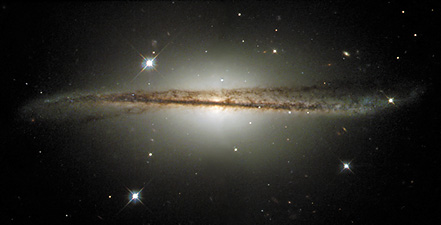
Many astronomers have concluded that large present-day galaxies formed from smaller galaxies. Over billions of years, many smaller galaxies may have merged to produce the galaxies, groups, and clusters we observe today. The evolution of galaxies continues. In a few billion years, for example, the Milky Way and Andromeda galaxies will probably merge into a larger galaxy, most likely an elliptical system.
Loading the player...Evolution of a galaxy
The rapid rate of mergers in the early universe promoted the formation of large black holes, regions of space whose gravitational force is so strong that nothing can escape from it, at the centers of many galaxies. As galaxies merge, the forming galaxy’s gravitational pull tends to draw matter to its center. This process can cause extremely massive stars to form at the centers of such galaxies. The stars die quickly—often after less than 1 million years—in violent explosions called supernovae that may leave behind black holes. The black holes may then merge to form a single supermassive black hole with a mass of more than 1 billion times that of the sun.

As gas nears a supermassive black hole, friction heats the gas to temperatures of up to millions of degrees. The gas shines brightly, giving off radiation—from radio waves to X rays—that outshines the rest of the galaxy. Such black holes form the nuclei of active galaxies. Objects known as quasars rank as the brightest examples of active galaxies. Quasars appear nearly absent in the local universe but were more common in the early universe.
Many supermassive black holes, however, lack sufficient nearby matter to generate intense radiation. Scientists have identified these black holes by analyzing the motions of stars and gas near the centers of galaxies. Based on such evidence, astronomers think that the Milky Way’s center contains a supermassive black hole with a mass about 3.7 million times that of the sun. Observations indicate that supermassive black holes lie at the centers of nearly all large galaxies. 